Book Of Kells: Illuminated Medieval Manuscript From Monastery On Iona, Scotland
A. Sutherland - AncientPages.com - One of the most important monuments of Irish Christianity and works of Irish-Saxon art is the famous Book of Kells (now in the Trinity College Library in Dublin, Ireland).
The Book of Kells is an illuminated manuscript probably created by Celtic monks in a monastery on the island of Iona, c. 800 AD.
 The Book of Kells is an integral part of an exhibition that attracts over 500,000 visitors to Trinity College in Dublin each year. Image credit: Jeff Pioquinto/Flickr
The Book of Kells is an integral part of an exhibition that attracts over 500,000 visitors to Trinity College in Dublin each year. Image credit: Jeff Pioquinto/Flickr
The book's name originates from the monastery of Kells, County Meath, Ireland. This magnificent manuscript was brought to Kells following a Viking raid on the monastery on the island of Iona, Scotland, in 806.
The first mention of this work of art can be found in the Annals of Ulster under the year 1007 AD.
Based on the records, 'the great Gospel book of Columcille, the chief relic of the western world, was stolen during the night from the great stone church of Cenannus (Kells).'
The Book of Kells contains the complete text of the Gospels of the New Testament, which means Matthew, Mark, and Luke, and the Gospel of John through John 17:13, written in black, red, purple, and yellow ink in an insular majuscule script, preceded by prefaces, summaries, and concordances of Gospel passages.
Illustration from the Book of Kells. Credit: Wikipedia
The manuscript is in excellent condition, considering its great age, but many pages have suffered some damage to the delicate artwork due to rubbing. The book was probably the product of a major scriptorium, a room in medieval European monasteries devoted to monastic scribes' writing, copying, and illuminating of manuscripts by monastic scribes. It took many years to accomplish the work. However, the book was never finished, and the projected decoration of some pages appeared only in outline.
Additionally, it is believed that some 30 folios of the original manuscript have been lost over the centuries.
Researchers assume the manuscript was created as one book containing all four Gospels, but new research reveals this assumption is false.
 The Book of Kells showing the lavishly decorated text that opens the Gospel of John. Credit: Wikipedia
The Book of Kells showing the lavishly decorated text that opens the Gospel of John. Credit: Wikipedia
However, a very meticulous analysis conducted by Dr. Bernard Meehan of Trinity College, Dublin, shows that the Book of Kells was initially composed of two separate works up to half a century apart.
Many full-page miniatures beautifully decorate the text of the Book of Kells, and countless miniature painted decorations appear throughout the work. The decoration of the book is famous for combining intricate detail with bold and energetic compositions.
The colorful illustrations and monastic scribes often use purple, lilac, red, pink, green, and yellow.
The decoration of the book is not only limited to the primary pages. Scattered through the text are decorated initials, and various small figures of animals and humans are interconnected with complicated Celtic knots and interlacing patterns.
No earlier surviving manuscript has this massive amount of decoration.
In 2011, the Book of Kells was added to the UNESCO World Records list.
Updated on January 12, 2024
Written by – A. Sutherland - AncientPages.com Senior Staff Writer
Copyright © AncientPages.com All rights reserved. This material may not be published, broadcast, rewritten or redistributed in whole or part without the express written permission of AncientPages.com
Expand for referencesMore From Ancient Pages
-
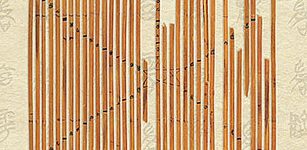 Two Millennia Old Bamboo Slips With Records Of Ancient Rituals Deciphered
Artifacts | Dec 20, 2023
Two Millennia Old Bamboo Slips With Records Of Ancient Rituals Deciphered
Artifacts | Dec 20, 2023 -
 Mystery Of The Strange Rock In New England That People Fear To Approach
Featured Stories | Apr 17, 2024
Mystery Of The Strange Rock In New England That People Fear To Approach
Featured Stories | Apr 17, 2024 -
 The Apaches’ Mysterious Encounter With Unknown Beings
Featured Stories | Jun 10, 2024
The Apaches’ Mysterious Encounter With Unknown Beings
Featured Stories | Jun 10, 2024 -
 New Evidence Of Roman And Medieval Leicester
Archaeology | Dec 10, 2015
New Evidence Of Roman And Medieval Leicester
Archaeology | Dec 10, 2015 -
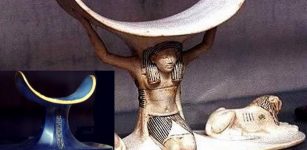 Why Did Ancient Egyptians Use Pillows Made Of Stone?
Ancient History Facts | Jun 18, 2018
Why Did Ancient Egyptians Use Pillows Made Of Stone?
Ancient History Facts | Jun 18, 2018 -
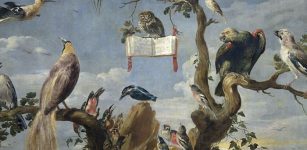 Birds – Mysterious Avian Messengers That Symbolized Bridge Between Humans And Gods In World Beliefs
Featured Stories | Aug 21, 2021
Birds – Mysterious Avian Messengers That Symbolized Bridge Between Humans And Gods In World Beliefs
Featured Stories | Aug 21, 2021 -
 Ogham: Unique Celtic Alphabet Used By Druids And Abandoned During Christian Era
Featured Stories | Jul 9, 2021
Ogham: Unique Celtic Alphabet Used By Druids And Abandoned During Christian Era
Featured Stories | Jul 9, 2021 -
 Sōhei And Yamabushi: Fearsome Ancient Warrior Monks Of Japan
Featured Stories | Feb 26, 2022
Sōhei And Yamabushi: Fearsome Ancient Warrior Monks Of Japan
Featured Stories | Feb 26, 2022 -
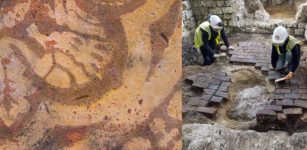 Strange Mythical Creature Resembling A Sphinx Discovered In A Medieval Bathroom
Archaeology | Mar 10, 2020
Strange Mythical Creature Resembling A Sphinx Discovered In A Medieval Bathroom
Archaeology | Mar 10, 2020 -
 Did Neanderthals And Modern Humans Meet In The Czech Republic 50,000 Years Ago?
Archaeology | Jun 17, 2017
Did Neanderthals And Modern Humans Meet In The Czech Republic 50,000 Years Ago?
Archaeology | Jun 17, 2017 -
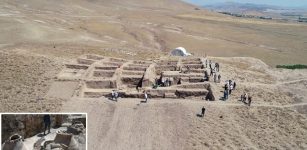 What Are The Monumental Uratrian-Era Structures Unearthed At Garibin Tepe In Van?
Archaeology | Sep 4, 2023
What Are The Monumental Uratrian-Era Structures Unearthed At Garibin Tepe In Van?
Archaeology | Sep 4, 2023 -
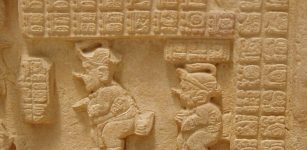 Alux: Little Mythical Troublemaker And Guardian Of Corn Fields In Mayan Folklore
Featured Stories | Jun 11, 2019
Alux: Little Mythical Troublemaker And Guardian Of Corn Fields In Mayan Folklore
Featured Stories | Jun 11, 2019 -
 Hidden Inca Water System Beneath The Machu Picchu Jungle Discovered By LIDAR
Archaeology | Mar 11, 2022
Hidden Inca Water System Beneath The Machu Picchu Jungle Discovered By LIDAR
Archaeology | Mar 11, 2022 -
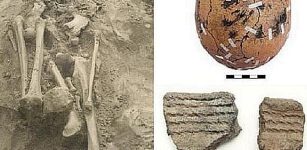 Eastern Baltic’s Communities Of First Farmers And Hunter-Gatherers Merged Slowly
Archaeology | Dec 10, 2023
Eastern Baltic’s Communities Of First Farmers And Hunter-Gatherers Merged Slowly
Archaeology | Dec 10, 2023 -
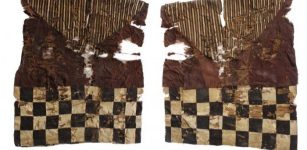 Rare And Well-Preserved Inka Tunic Discovered In Chile
Archaeology | Feb 14, 2023
Rare And Well-Preserved Inka Tunic Discovered In Chile
Archaeology | Feb 14, 2023 -
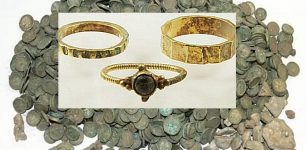 900-Year-Old Coins And Jewelry Unearthed In Polish Village – Could They Belong To A Ruthenian Princess?
Artifacts | Jan 12, 2021
900-Year-Old Coins And Jewelry Unearthed In Polish Village – Could They Belong To A Ruthenian Princess?
Artifacts | Jan 12, 2021 -
 How Emma Of Normandy Risked Her Life To Save England
Featured Stories | Mar 20, 2021
How Emma Of Normandy Risked Her Life To Save England
Featured Stories | Mar 20, 2021 -
 Codebreakers Crack Secrets Of The Lost Letters Of Mary, Queen Of Scots
News | Feb 8, 2023
Codebreakers Crack Secrets Of The Lost Letters Of Mary, Queen Of Scots
News | Feb 8, 2023 -
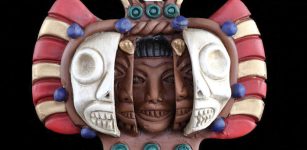 Supay: God Of Death And Underworld And Ruler Over Race Of Demons According To Inca Beliefs
Featured Stories | Jun 7, 2020
Supay: God Of Death And Underworld And Ruler Over Race Of Demons According To Inca Beliefs
Featured Stories | Jun 7, 2020 -
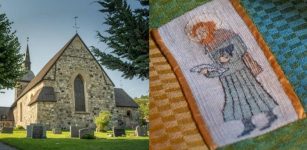 Saint Botvid – Viking Who Was Killed By A Slave He Granted Freedom
Featured Stories | Apr 10, 2023
Saint Botvid – Viking Who Was Killed By A Slave He Granted Freedom
Featured Stories | Apr 10, 2023

